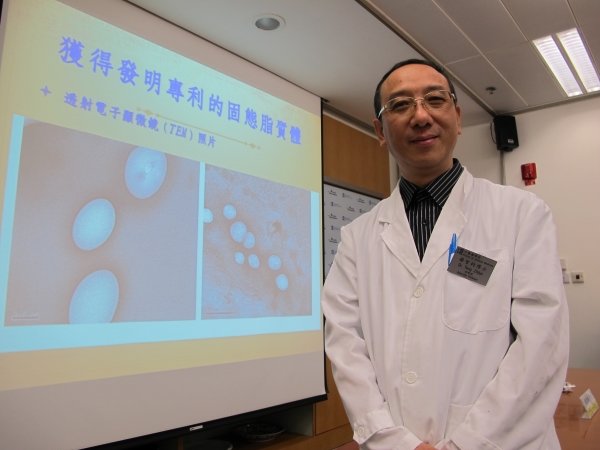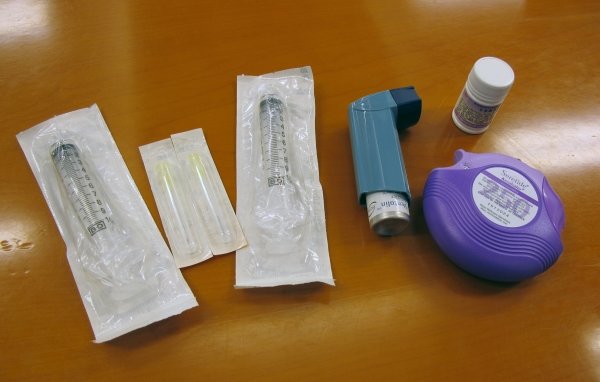Campus Digest
Chinese medicine scholar develops novel nano-vesicles for controlled release of medication for pulmonary diseases via inhalation
18 Aug 2014
Dr Yang Zhijun, Associate Professor of the Teaching and Research Division, School of Chinese Medicine, has applied nanotechnology to develop a novel formulation of dehydrated lipid vesicles for the delivery and controlled release of active pharmaceutical ingredients to the lungs via inhalation for the treatment of pulmonary diseases. The effect of this formulation lasts for up to 72 hours. The invention, which has been granted a patent by the State Intellectual Property Office of China, offers a prolonged therapeutic period for each administration of the drug with reduced dosage and side effects and is thus safer for patients.
Asthma, emphysema and respiratory tract sensitivity reaction are common chronic diseases of the respiratory system. These diseases involve continuous constriction of the airways which cause symptoms such as coughing and shortness of breath, and could result in fatal consequences in severe cases. Patients are usually prescribed bronchodilators administered either orally or via injection or inhalation.
Drugs administered orally or via injection are circulated to the heart, brain and other parts of the body through the blood resulting in various side effects and adverse effects on patients on the one hand and the loss of pharmaceutical ingredients required by the target organs on the other hand. Patients thus have to take a higher dosage of medication in order to control the disease. Inhalation is preferable to alternative administration of medication routes because of the direct targeting of drugs to the lungs via the respiratory tract demonstrating speedy therapeutic effects. However, since a higher dosage of medication is harmful to the membrane of the respiratory tract, patients are usually prescribed limited doses every four hours to ensure a sustained therapeutic effect.
In view of the limitations of current drugs for respiratory diseases like asthma, Dr Yang launched a study in 2007 to explore a kind of molecule capable of delivering the active pharmaceutical ingredients directly to the lungs with a prolonged therapeutic effect. He conducted the research through animal experiments with a tiny non-breakable natural molecular substance called liposomes. The study demonstrated a slow transportation rate of pharmaceutical ingredients encapsulated in liposomes and that traces of drugs were found in the lungs of animals 48 hours later, proving its ability to prevent rapid loss of drugs in the lungs or through the blood flow. The result of the study was published in International Journal of Nanomedicine in 2012.
Dr Yang further used nanotechnology to develop a new formulation of dehydrated lipid vesicles that could be inhaled for controlled release of active pharmaceutical ingredients in the lung for 72 hours. He explained that the new formulation permits the control of release and delivery of active pharmaceutical ingredients into the respiratory system for treatment, changes the systemic administration to topical administration, allows a prolonged therapeutic period for each administration of the drug, and increases stability with reduced dosage, systemic side effects and toxicity. Dr Yang said that the cost for extracting lipids would not be extremely high since it is a natural molecular substance and could be applied in a wide variety of medication via the respiratory tract.

